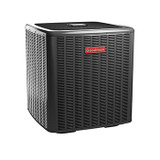Nordyne Central Air System Not Cooling
Troubleshooting Nordyne Central Air System
Check the Power Supply
The first step in troubleshooting your air conditioning system should always be to verify that it has power. A disruption in power supply can often be mistaken for a more severe problem. Start by ensuring that the circuit breaker connected to the AC unit has not tripped. If it has, reset it and check if the system starts. Additionally, inspect the external disconnect switch, usually located near the unit, to confirm it’s in the ‘on’ position. These steps ensure that power is adequately supplied to your system, allowing it to start the process of blowing cool air.
Thermostat Settings
Incorrect settings on your thermostat can be the culprit behind the lack of cold air. Ensure the thermostat is set to “cool” mode and the temperature setting is lower than the current room temperature. This triggers the system to start cooling. Also, check the fan setting; setting it to “auto” ensures the fan operates only when the air is being cooled, which is more energy-efficient than leaving it on “on,” which runs the fan continuously.
Inspect and Clean the Air Filter
A clogged air filter is a common cause for an air conditioning system to stop cooling effectively. The air filter is typically located along the return duct or in a slot on the furnace or air handler. Remove the filter and check for dirt accumulation. If it appears dirty, clean it with water or replace it with a new one if it’s disposable. Remember, a clean air filter is crucial as it ensures healthy airflow, which is essential for efficient operation and to keep the system blowing cold air.
Examine the Condenser Coils
The condenser unit, typically located outside the house, includes coils that play a crucial role in cooling your home. These coils can accumulate dirt, debris, and leaves, which impair their ability to dissipate heat. Turn off the power to the unit and gently clean the coils with a garden hose, ensuring that the water pressure is not so high as to bend the fins. Additionally, clear any debris surrounding the condenser unit. Maintaining clean coils is crucial for system efficiency, as it ensures the condenser fan draws air effectively through the coils for optimal performance.
Check the Refrigerant Levels
Low refrigerant levels can significantly reduce your air conditioner’s ability to produce cold air. Signs of low refrigerant include ice buildup on the refrigerant lines and the indoor evaporator coil, and reduced cooling capacity. Checking and recharging the refrigerant are tasks that require professional skills and equipment. If you suspect a refrigerant issue, it’s advisable to contact a certified technician who can safely handle these materials and ensure your system is charged to the manufacturer’s specifications.
Inspect the Evaporator Coil
If your system is running but not cooling adequately, a frozen evaporator coil might be the issue. This can occur when there is insufficient airflow (due to a dirty air filter or blocked vents) or low refrigerant levels. To address a frozen coil, turn off the system to allow the coil to thaw, which can take several hours. Afterward, address the underlying issue—replace the air filter if it’s dirty or call a technician if you suspect refrigerant problems.
Compressor Troubleshooting
The compressor is the heart of your air conditioner system, compressing the refrigerant and circulating it through the system. To check if the compressor is functioning correctly, you can use an ohm-meter to test the motor windings for continuity. Signs of potential issues include readings that indicate open or grounded windings. If you’re unfamiliar with this process or find unusual readings, it’s best to contact a professional for a detailed inspection and repair.
Fan Motor Issues
Finally, inspect the fan motor in the condenser unit. Ensure that the fan blades are not damaged and that they turn freely. Tighten any loose nuts or bolts and check the wiring connections for signs of wear or damage. A malfunctioning fan can impede airflow, making it difficult for your system to cool your home effectively.
Contact Us Today
By following these troubleshooting steps, you can often resolve common issues that prevent your Nordyne central air system from effectively cooling your home. Regular maintenance, such as cleaning air filters and condenser coils and checking thermostat settings, plays a crucial role in preventing future issues. If you encounter complex problems, such as refrigerant issues or compressor malfunctions, don’t hesitate to contact our professional team at Furnace Part Source. We’re here to help ensure your air conditioning system continues to provide reliable cold air.
Recent Posts
-
Trane Central Air System Not Cooling
Struggling with a Trane central air system that won’t cool your home? You’re not alone. In this deta …27th Jun 2024 -
Lennox Central Air System Not Cooling
When your Lennox central air system stops cooling, it not only disrupts your comfort but can also si …27th Jun 2024 -
Goodman Central Air System Not Cooling
When your Goodman central air system is not cooling, it can be frustrating and uncomfortable, especi …20th Jun 2024




